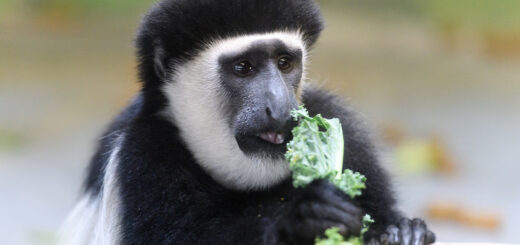Gastritis in the Short-Beaked Echidna (Tachyglossus aculeatus): Parallels with Ruminal Acidosis in Herbivores and Implications for the Understanding of Echidna Digestive Physiology
Citation
Tong L, Shaw M, Chong D, Tobias G, Hulst F, Herrin K, Vogelnest L. 2017. Gastritis in the Short-Beaked Echidna (Tachyglossus aculeatus): Parallels with Ruminal Acidosis in Herbivores and Implications for the Understanding of Echidna Digestive Physiology. In Ward A, Coslik A, Brooks M Eds. Proceedings of the Twelfth Conference on Zoo and Wildlife Nutrition, Zoo and Wildlife Nutrition Foundation and AZA Nutrition Advisory Group, Frisco, TX.
Abstract
Short-beaked echidnas (Tachyglossus aculeatus) are endemic to Australia and south-eastern New Guinea (Indonesia and Papua New Guinea). In mainland Australia they feed primarily on termites. Echidnas have a single chambered stomach which is entirely lined with squamous (non-glandular) cells, and is histologically analogous to the rumen. The short-beaked echidna stomach has historically been understood to function as a grinding or storage chamber for insect ingesta. Necropsy following sudden death of a captive adult echidna from a zoological collection in 2015 revealed a dramatic gastritis reminiscent of ruminal acidosis lesions common in livestock fed high carbohydrate diets. A review of gastric pathology of 20 captive and wild echidna necropsies from the Taronga Wildlife Hospital (1998-2015) revealed that 14/20 had similar gastritis lesions. One hundred percent of echidnas with microscopically normal stomachs were wild (n=7), while 100% of long-term captive echidnas (n=8) had moderate to marked gastritis. Five echidnas which were wild but had been in captive rehabilitation care for a minimum of 17 days also had gastritis. Microscopic comparison of normal and abnormal stomachs found that normal (wild) echidnas had a population of uniform coccoid bacteria lining the stomach. In contrast the inflamed stomachs had mixed populations of rod bacteria and fungi. These anatomic, microenvironment, and pathological findings suggest that the echidna stomach may, contrary to current understanding, function like a herbivore rumen utilizing resident bacteria to assist with digestion of food. Echidna diets have historically contained large amounts of highly digestible carbohydrate – which could explain the high incidence of gastritis in captive echidnas.
 [Tong] Gastritis-in-the-SBE-NAG-abstract-L-Tong.pdf 25 KB
[Tong] Gastritis-in-the-SBE-NAG-abstract-L-Tong.pdf 25 KB








